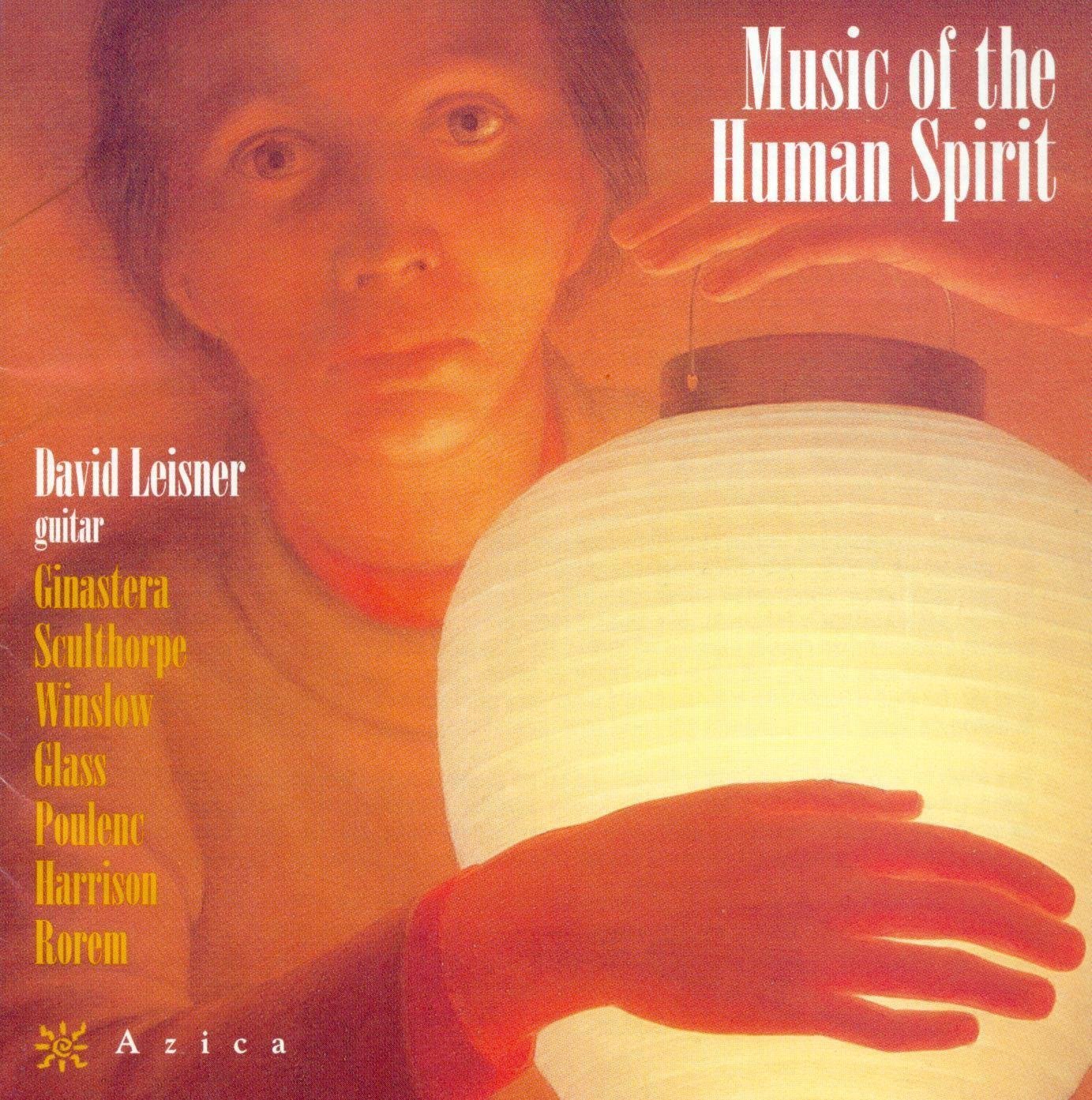
David Leisner, guitar
Catalog
Tracks
5-8 Peter Sculthorpe: From Kakadu 10:!5
9-20 Ricard Winslow: Variations on a Tune of Stephen Foster 13:51
21 Philip Glass: Fourth Knee Play 13:09
22 Lou Harrison: Serenade 2:42
23 Francis Poulenc: Sarabande 1:48
24-30 Ned Rorem: Suite 11:07
Notes
The “knee plays” from Einstein on the Beach are interludes, named after the human knee, whose function, of course, is to join. In this one, there ore three kinds of material, all of which are developed throughout the opera. The opening section centers around a striking harmonic progression. In his book, Musk bf Philip Glass, he writes: “What I was looking for was a way of combining harmonic progressions with the rythmic structure I had been developing, to produce a new overall structure.” Then he goes on to describe this particular progression, which at first “appears to be a traditional cadential formula, the time-honored closing phrase which, in a variety of forms, became highly developed during the Baroque period and lasted well into the present. However, there is an altered or pivotal chord in the middle that results in a closing choro a half-step below what one would normally expect. It is this lowered resolution of the cadence that motivates its repetition.” The chord pattern is f minor, Db major, Bbb major or A major, B major, E major. This section is followed by a slower, very lyrical passage, which eventually became material for his next operas, Satyagraha and Akhnaten, as well. After a brief return to the opening material follows an extended passage of scales, using his typical “additive process”, which he describes as follows: “Additive process is one of those very simple ideas that con quickly lead to very complicated procedures. It can easily be explained: A musical grouping or measure of, say, five notes is repeated several times, then is followed by a measure of six notes (also repeated), then seven, then eight, and so on. A simple figure con expand and then contract in many different ways, maintaining the same general melodic configuration but, because of the addition (or subtraction) of one note, it takes on a very different rhythmic shape.” In Glass’ music, the phrase as structural element is replaced by a group of repeated phrases, which, as I think of it, is like taking music from the third into the fourtn dimension.
— David Leisner
NOTES ABOUT DAVID LEISNER
David Leisner is on extraordinarily versatile musician with a multifaceted career as electrifying performing artist, a distinguished composer, and a master teacher. Regarded as one of America’s leading classical guitarists, his superb musicianship and provocative programming have been applauded by critics and audiences around the world.
Mr. Leisner’s career as a guitarist began auspiciously with top prizes in both the 1975 Toronto and 1981 Geneva International Guitar Competitions. In the 1980s, a disabling hana injury, focal dystonia, cut off his blossoming performing career in mid-stream and forced him to stop playing for nearly a decade. Through a pioneering approach to technique based on his understanding of the physical aspects of playing the guitar, Leisner gradually rehabilitated himself. Now completely recovered, he has once again resumed an active performing career, earning accolades Wherever he plays.
His recent seasons were highlighted by an innovative three-concert series at Weill Recital Hall at Carnegie Hall in New York City, which included the first all-Bach guitar recital in New York’s history. In addition, he made acclaimed debuts in Greece, the Philippines and Mexico, and performed on concert series throughout the US and Europe. He is also a regular at the Santa Fe, Vail Valley, Cape and Islands, Borgemusic and Angel Fire Chamber Music Festivals, performing with flutist Eugenia Zukerman, baritone Kurt Ollmann, violinist Ida Kavofian and many others. Celebrated for expanding the guitar repertoire, David Leisner has premiered works by many of today’s most important composers, including Virgil Thomson, Ned Rorem, Philip Glass, Richard Rodney Bennett, Peter Sculthorpe and Osvoldo Golijov.
Mr. Leisner is himself a highly respected composer noted for the emotional and dramatic power of his music. His Dances in fa Madhouse, in both its original version for violin and guitar and as an arrangement for orchestra, has received hundreds of performances. Recent commissioners include the fairfield Orchestra (CT), Red Cedar Chamber Music (IA), and the Twentieth Century Unlimited Series (NM).
A distinguished teacher, David Leisner is currently on the faculties of the New England Conservatory and the Manhattan School of Music Primarily Aught ns both guitarist and composer, he briefly studied guitar with John Duarte, David Starobin and Angelo Gilordino and composition with Richciid Winslow, Virgil Thomson, Charles Turner and David Del Tiedici.
Credits
℗ and © 2002 Azica Records. All rights reserved.
